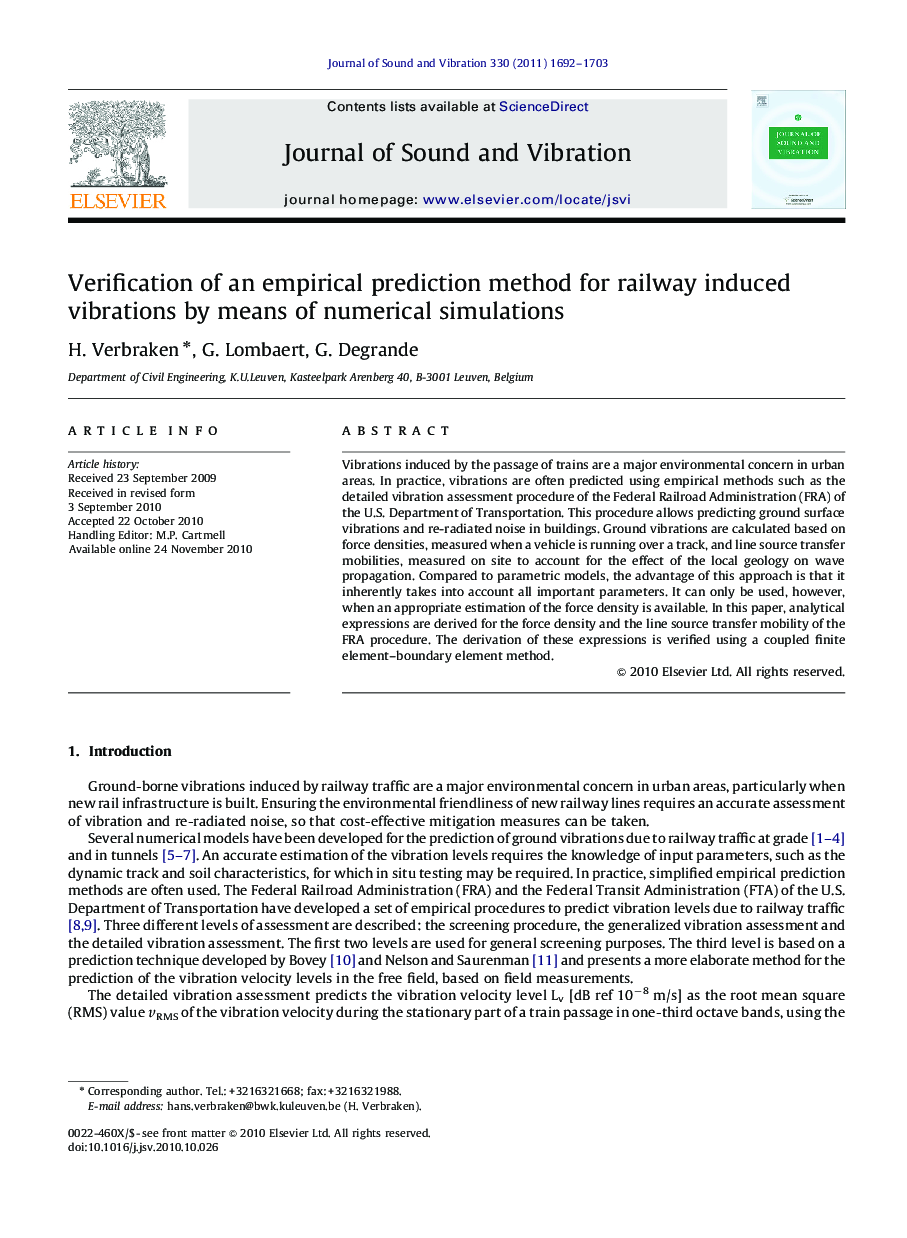| Article ID | Journal | Published Year | Pages | File Type |
|---|---|---|---|---|
| 288567 | Journal of Sound and Vibration | 2011 | 12 Pages |
Vibrations induced by the passage of trains are a major environmental concern in urban areas. In practice, vibrations are often predicted using empirical methods such as the detailed vibration assessment procedure of the Federal Railroad Administration (FRA) of the U.S. Department of Transportation. This procedure allows predicting ground surface vibrations and re-radiated noise in buildings. Ground vibrations are calculated based on force densities, measured when a vehicle is running over a track, and line source transfer mobilities, measured on site to account for the effect of the local geology on wave propagation. Compared to parametric models, the advantage of this approach is that it inherently takes into account all important parameters. It can only be used, however, when an appropriate estimation of the force density is available. In this paper, analytical expressions are derived for the force density and the line source transfer mobility of the FRA procedure. The derivation of these expressions is verified using a coupled finite element–boundary element method.
